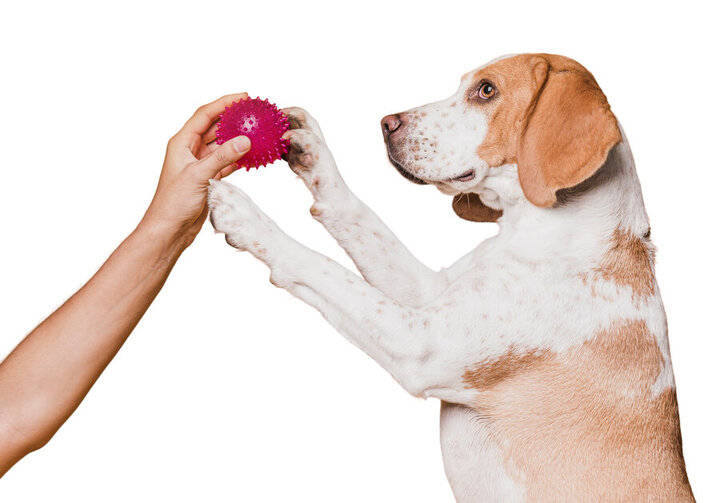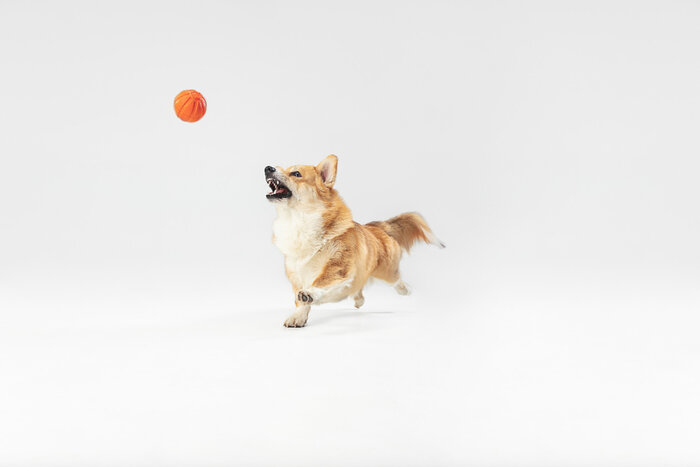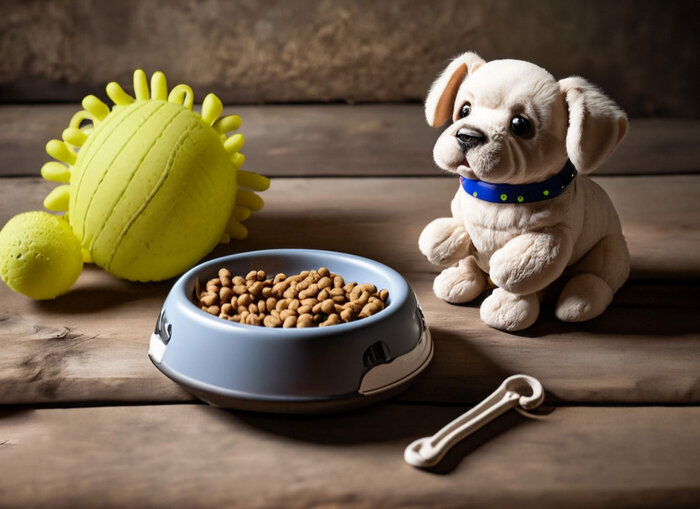Are you tired of training your dog who is not food motivated? We are here to give you some important notes on how to train your loving fur.
How to Train A Dog Who Is Not Food Motivated
Introduction
We know that food treats are the best way to train our dogs. They are often the go-to tool for many trainers and dog parents to encourage dogs to learn new commands and behaviors because of the allure of tasty snacks.
However, it’s important to remember that not every dog jumps at the chance for a food reward. Some dogs may seem indifferent to treats, showing little interest in food-based motivation.
This kind of situation needs a deeper understanding of what drives your dog, emphasizing the need to explore alternative motivators to achieve successful training outcomes.
Find Out Alternative Motivators
The training will be effective if we understand our dog’s unique preferences. Every dog has its own motivators that can make the learning session enjoyable and rewarding.
Thus, you should observe your dog’s behavior and reactions in different situations which can give you real insights into what truly captures their interest.
There are some dogs who may not be food-oriented. They might respond strongly to other rewards. Cuddles and verbal praise can be powerful motivators for many dogs.
Some others may find toys or engaging in play to be their ultimate reward. Some dogs might even prefer the simple joy of a favorite activity, like a game of fetch or tug-of-war, over any treat.
So, before training, every great dog owner must find out about these alternative motivators, which can make training sessions more effective and enjoyable for you and your dog.
Health Check and Environmental Considerations
Before assuming that food isn’t their motivation, you should consider your dog’s overall health. Sometimes, a lack of interest in food can be a symptom of an underlying health issue.
For this reason, at first consult with your veterinarian who can help rule out medical reasons for your dog’s indifference towards treats. This step makes sure that an unidentified health issue won’t interfere with your training efforts.
Environmental factors also play a significant role in your dog’s motivation. Dogs can be sensitive to their surroundings; what works in one setting may be less effective in another.
Stress, distractions, and even the time of day can influence your dog’s responsiveness to training. You must pay attention to these environmental factors and adjust your training approach accordingly. This can help maintain your dog’s interest and motivation.
Alternative Training Strategies
There are alternative training strategies when your dog is not food motivated. Alternative strategies can open new doors to learning and bonding.
Affection as Motivation
For many dogs, a simple pat on the head or a cheerful “Good boy!” means the world. Using physical affection and verbal praise as rewards can deeply reinforce desired behaviors.
Tips for Effective Use of Affection:
Remember, too much excitement can distract your dog from the task. For this reason, try to use calm, soothing tones and gentle pets to convey your approval.
It is important to give your dog affection just after they do what you want. It helps your dog understand that their good behavior is connected to the affection they receive.
Not all dogs are the same; some may prefer verbal praise over physical affection and vice versa. So, you must observe your dog’s reaction to different forms of affection to find what is working best.
Related Reading: Dog Obedience Training at Home
Toy and Play as Motivation
Toys and play with them can be excellent tools for training if your dog is not food motivated. So, toys aren’t just for playtime. The promise of play can be a powerful motivator for dogs who love their toys.
Identify Rewarding Toys and Activities:
Always observe your dog’s preferences and find the best toys and activities. Some dogs may like a specific toy, while others might prefer a game of fetch or tug-of-war. For this reason, use their preferences to your advantage during training.
Try to incorporate toys into training. The favorite toy of your dog can be a great reward. For instance, initiate a short play session as a reward after successfully completing a command.
Strategies for Toy and Play Integration:
Please ensure playtime is within the training. Reward your dog with short play times with their favorite toys. This strategy helps keep your dog focused on the training task.
Teach your dog a word that signals playtime is over to smoothly transition back to training, making your sessions more effective.
Environmental Rewards
Sometimes, the world around your dog can provide the most compelling rewards. Allowing your dog to explore or sniff around can be just as rewarding as any toy or treat.
Guidelines for Using Environmental Rewards:
When your dog completes a command, you can allow them a moment of free sniffing or exploring as a reward. But you must control this freedom and limit time-bound to keep the training on track.
Environmental rewards can lead to distractions. So, you must ensure your loving dog is under proper control. Always be conscious of using these rewards in environments where you can still maintain your dog’s attention on you.
A short walk can be a reward. So, use the natural environment during training. After a successful heel or sit, allow a brief period of free exploration.
Related Reading: How to Train Your Dog to Walk Beside You?
Training Sessions and Setting Up for Success
If you want to maximize the effectiveness of your training sessions, you must involve careful planning and a conducive environment. Here’s how to keep your dog engaged and set up each session for success if your dog is not food oriented:
How to Structure Short, Focused Training Sessions
- Keep It Short: Dogs have limited attention spans. Thus, you should aim for training sessions of 5 to 15 minutes long to ensure your dog remains focused and interested.
- Stay Goal-Oriented: Try to keep focused on a specific goal for each session. So, focusing on one command or behavior at a time can prevent confusion and increase success rates.
- Positive Reinforcement: Regardless of the motivator, always end with a positive vibe to ensure your dog associates training with a rewarding experience.
How to Adjust Training Environments
- Minimize Distractions: To minimize distractions, you must start training in a quiet and familiar environment to help your dog concentrate. Gradually introduce more distractions as they become more proficient.
- Vary the Setting: Once your dog is comfortable and responsive, change training locations to generalize behaviors across different environments.
- Control the Environment: You must use barriers, leashes, or fences as needed to keep the training area secure and distraction-free.
Building a Strong Bond
It’s crucial to forge a strong bond with your devoted dog, especially if food isn’t your dog’s primary motivator. A strong and positive bond enhances motivation and facilitates easier learning.
Yes, the foundation of effective dog training lies in the relationship between you and your dog.
The Role of Trust and Mutual Respect:
You must be consistent with commands, rewards, and expectations. This consistency builds trust, as your dog knows what to expect from you.
Spend quality time with your dog outside of training sessions. This helps you understand their needs, fears, and preferences, fostering a deeper connection.
As a good pet parent, you must recognize when your dog is tired, frustrated, or not in the mood for training. Pushing them too hard can strain your relationship and reduce their motivation to learn.
Enhancing Motivation Through Bonding:
Sometimes you should engage in activities that both you and your dog enjoy. This strengthens your bond and makes training sessions something your loving dog looks forward to.
Always approach training with patience. Rewarding efforts and celebrating successes, no matter how small, build a positive learning environment.
You should learn to read your dog’s body language and cues. Effective communication means you can respond appropriately to their needs, making training more effective.
Building a strong bond based on trust, mutual respect, and understanding is equally important, as it lays the groundwork for a motivated and willing learner.
Professional Assistance and Resources
Sometimes, despite our best efforts, we might hit a roadblock in our training journey. That’s perfectly okay! Knowing when it’s time to seek professional help can make a significant difference.
Seeking Professional Help:
If you notice your training isn’t progressing or if certain behaviors seem to be getting worse, it might be time to call in a professional dog trainer or behaviorist. These experts can provide customized strategies and insights based on their experience and knowledge.
Resources:
There are countless books, online courses, and videos dedicated to dog training. Websites like the American Kennel Club (AKC) offer a wealth of information.
Local dog training clubs and online forums can also provide support and advice. Always look for reputable sources and consider recommendations from trusted professionals.
Conclusion
At first, training a dog that isn’t food-motivated might seem like a daunting task. However, as we’ve explored, there are plenty of alternative methods to engage and train your furry friend successfully.
Key Notes:
Remember, the core of successful training lies in understanding your dog’s unique preferences, whether it’s affection, toys, play, or environmental exploration.
Short and focused training sessions in a distraction-free environment can significantly enhance your dog’s learning experience.
Every dog is an individual with their own likes and dislikes. It may take some time to discover what truly motivates your dog, but with patience and persistence, you will find the key to their learning. Building a strong, positive bond is equally important, as it lays the foundation for a trusting and respectful relationship.
Credit Image: Freepik




